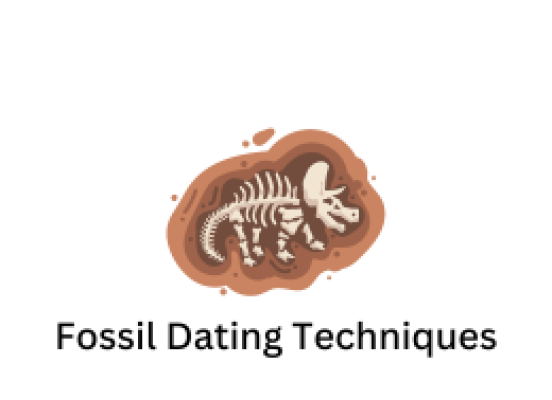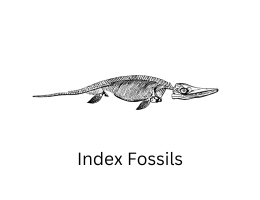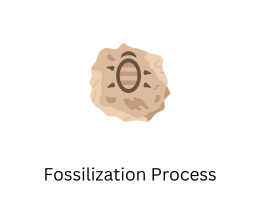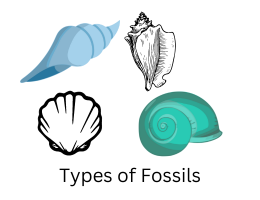
Fossil Dating Techniques
- By admin --
- Wednesday, 21 Feb, 2024
Dating fossils is akin to unraveling a mystery—a puzzle that spans millions, even billions, of years. Scientists employ various techniques, each with its nuances and capabilities, to piece together Earth's timeline. From the relative simplicity of stratigraphy to the precision of radiometric dating, these methods shed light on the past, allowing us to understand the evolution of life on our planet. In this exploration, we delve into the diverse array of fossil dating techniques, examining their principles, applications, and contributions to our understanding of Earth's history.
Stratigraphy: Layers of Time
Stratigraphy forms the bedrock of fossil dating. This method relies on the principle of superposition—the idea that in undisturbed layers of sedimentary rock, the oldest layers lie at the bottom, while younger layers accumulate on top. By studying the sequence of rock layers and the fossils contained within them, scientists can establish relative ages. Index fossils—species that existed for a relatively short period but were widespread—play a crucial role in correlating rock layers across different regions. The use of index fossils allows geologists to construct geologic timelines and identify key events, such as mass extinctions, with remarkable accuracy.
Biostratigraphy: Fossils as Timekeepers
Biostratigraphy focuses on the study of fossil assemblages to date rock layers. By analyzing the presence and abundance of particular species within sedimentary strata, scientists can determine the relative ages of rocks. This method is particularly useful when radiometric dating is not feasible or when correlating rock layers over large distances. Biostratigraphy has been instrumental in refining our understanding of Earth's history, providing detailed chronologies of past environments and ecosystems.
Radiometric Dating: Unraveling Atomic Clocks
Radiometric dating, also known as radioactive dating, offers unparalleled precision in determining the absolute ages of rocks and fossils. This method exploits the natural decay of radioactive isotopes within minerals. The parent isotope decays into a stable daughter isotope at a known rate, known as its half-life. By measuring the ratio of parent to daughter isotopes in a sample, scientists can calculate its age. Commonly used isotopic systems include uranium-lead, potassium-argon, and carbon-14 dating, each suited to different geological time scales.
Uranium-Lead Dating: Deciphering Deep Time
Uranium-lead dating is one of the most widely used radiometric dating methods, particularly for dating ancient rocks and minerals. Uranium-238 decays into lead-206, with a half-life of about 4.5 billion years. This method is well-suited for dating the oldest rocks on Earth, providing insights into the formation of the planet and the early stages of life's evolution.
Potassium-Argon Dating: Unveiling Ancient Landscapes
Potassium-argon dating is commonly employed to date volcanic rocks and minerals. Potassium-40, a radioactive isotope of potassium, decays into argon-40 with a half-life of approximately 1.3 billion years. This technique is particularly useful for dating hominin fossils and archaeological sites, offering invaluable insights into human evolution and prehistoric cultures.
Carbon-14 Dating: Illuminating Recent History
Carbon-14 dating, also known as radiocarbon dating, is indispensable for dating organic materials up to around 50,000 years old. Carbon-14, a radioactive isotope of carbon, is continuously produced in the atmosphere through cosmic ray interactions. Organisms incorporate carbon-14 into their tissues while alive, and upon death, the carbon-14 decays at a known rate. By measuring the remaining carbon-14 in organic samples, scientists can determine their age with remarkable precision.
Luminescence Dating: Shedding Light on the Past
Luminescence dating encompasses a group of techniques that measure the accumulation of trapped electrons within minerals such as quartz and feldspar. When these minerals are exposed to sunlight or heat, the trapped electrons are released, resetting the luminescence signal. By measuring the intensity of this signal, scientists can determine the time elapsed since the minerals were last exposed to sunlight or heat. Luminescence dating is particularly useful for dating sediments and archaeological materials, providing chronologies for human occupation and environmental change.
Fission Track Dating: Tracing Atomic Trails
Fission track dating relies on the spontaneous fission of uranium-238 within minerals such as zircon and apatite. When uranium atoms undergo fission, they create linear tracks in the crystal lattice of the mineral. By counting the density of these tracks, scientists can estimate the age of the mineral. Fission track dating is especially valuable for dating volcanic ash layers and sedimentary rocks, offering insights into past volcanic activity and sedimentation rates.
Paleomagnetic Dating: Navigating Earth's Magnetic Field
Paleomagnetic dating exploits the record of Earth's magnetic field preserved in rocks and sediments. Over time, the Earth's magnetic field has undergone reversals, causing the magnetic north and south poles to switch places. Certain minerals, such as magnetite, align themselves with the prevailing magnetic field during formation. By analyzing the orientation of magnetic minerals in rocks, scientists can determine the age of the rocks and reconstruct past changes in Earth's magnetic field.
Taphonomy: Understanding Fossilization Processes
Taphonomy is the study of the processes that affect organisms after death and their transition into fossils. Understanding taphonomy is crucial for interpreting fossil assemblages and reconstructing ancient environments. Factors such as burial environment, sedimentation rates, and biological activity influence the preservation potential of fossils. By integrating taphonomic principles with dating techniques, scientists can refine their interpretations of the fossil record and reconstruct past ecosystems with greater accuracy.
In conclusion, fossil dating techniques encompass a diverse array of methods, each offering unique insights into Earth's history. From the relative simplicity of stratigraphy to the precision of radiometric dating, these techniques allow scientists to unravel the mysteries of the past, reconstructing ancient landscapes, ecosystems, and evolutionary pathways. By combining multiple dating methods and integrating taphonomic principles, researchers continue to refine our understanding of Earth's history, providing invaluable perspectives on the processes that have shaped our planet and the life it harbors.





